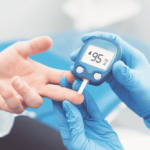The upper back is the area between the lower part of the neck to the bottom of the ribcage. The thoracic spine is the collective name doctors use to describe the parts of the upper back. Upper back pain mainly results from a poor sitting posture, a traumatic injury, or muscle overuse. Long-term overuse or poor posture can overpower the stability of the thoracic spine leading to pain. Pain management treatment options for upper back pain may range from self-care practices such as massage and exercising to seeking professional pain management options like physical therapy.
What can go wrong in the thoracic spine
The thoracic spine has 12bones. One starts from the base of the neck and the last at the bottom of the ribcage. The thoracic spine anchors the rib cage and protects the other internal organs from any trauma. As such upper back is usually resistant to trauma and pain, unlike the lower back, so when pain occurs, it is usually because of a long-term cause or injury.
If you experience upper back pain, it can be due to problems in the thoracic spine, including:
- Muscular irritation- the shoulder girdle connects to the shoulder blade (scapula) and the back of the rib cage through large muscles. The large upper back muscles are susceptible to developing tightness or strains, which can be painful and difficult to alleviate. Therefore muscular irritation can be a result of deconditioning or overuse movements such as repetitive motions.
- Joint dysfunction- it can come from trauma due to a severe upper back injury or natural degeneration over time. As such, joints in the thoracic spine can become dysfunctional and severely painful. Some instances of joint dysfunction include joint capsule tearing and a facet joint’s cartilage tearing.
Common causes of upper back pain
Muscle deconditioning and poor posture
Over time, you can decondition your upper back muscles by not using them properly, like sitting in an incorrect posture for too long periods while at work. However, you can condition your upper back muscles to be strong and enduring by exercising, weight training, correcting your posture, and taking breaks after sitting for too long.
Muscle overuse
Muscle overuse occurs due to repeated motions over time, leading to upper back muscle strains, tightness, and irritation. For instance, lifting heavy objects over your head daily can cause muscle strain, irritation, and tightness leading to chronic pain if you ignore the early signs. You can treat muscle overuse by resting, using ice or heat to promote blood circulation in the upper back muscle tissues, or seeking physical therapy.
Traumatic injury
Car or bike crash, work-related accidents, slip and fall, lifting incorrectly, or working too hard can lead to upper back pain. In cases of an accident, the pain may not develop until later. Traumatic injuries can lead to fractured vertebrae, nerve damage, and even paralysis. So it is best to seek professional pain management treatment to avoid long-term pain. Some severe injuries may need surgery to alleviate the pain.
Other upper back pain causes include a herniated disc, pinched nerve, osteoarthritis, and spinal infection.
A key takeaway
Most causes of back pain can be due to a serious underlying issue or progressing illness, so it is best to seek immediate care to reduce the risks of spinal or nerve damage.
The Editorial Team at Healthcare Business Today is made up of skilled healthcare writers and experts, led by our managing editor, Daniel Casciato, who has over 25 years of experience in healthcare writing. Since 1998, we have produced compelling and informative content for numerous publications, establishing ourselves as a trusted resource for health and wellness information. We offer readers access to fresh health, medicine, science, and technology developments and the latest in patient news, emphasizing how these developments affect our lives.







